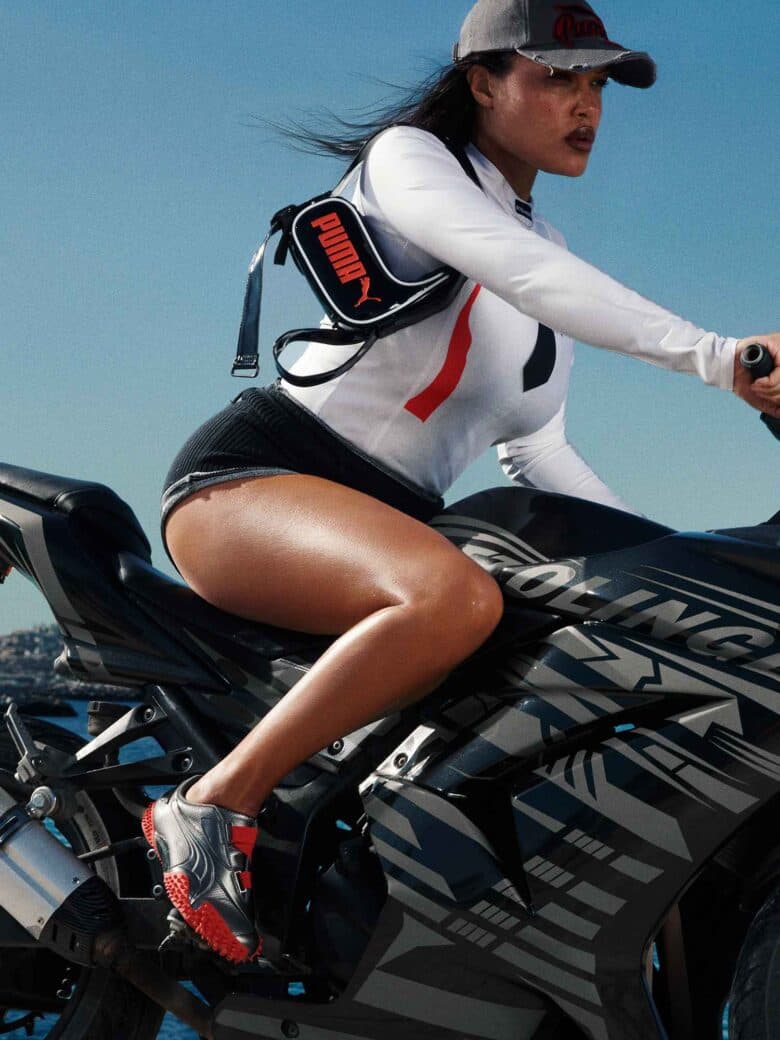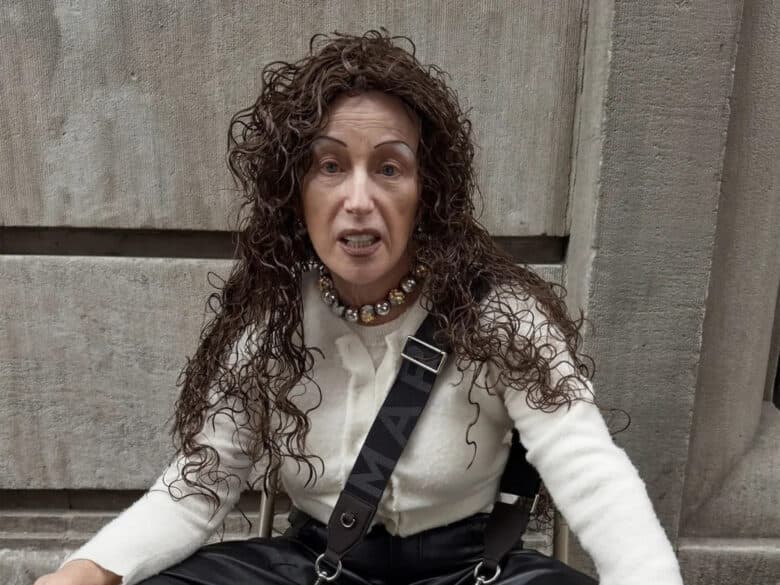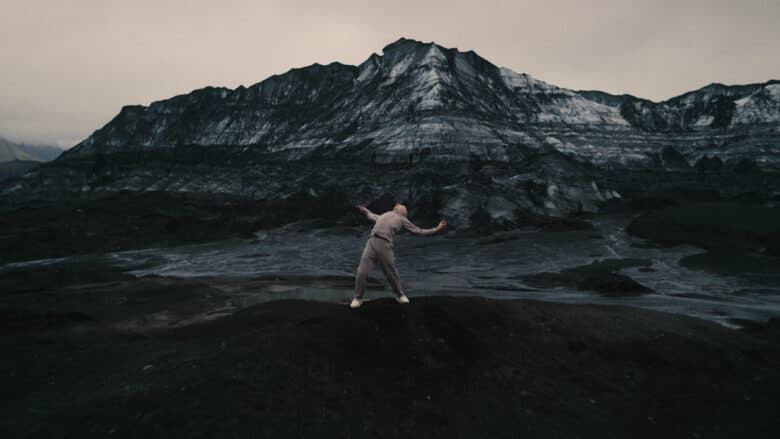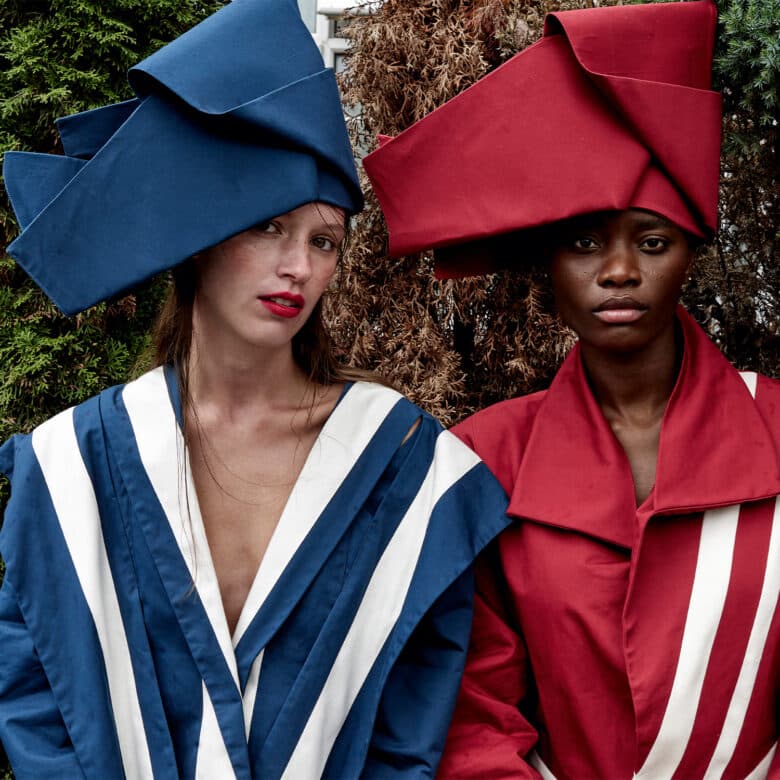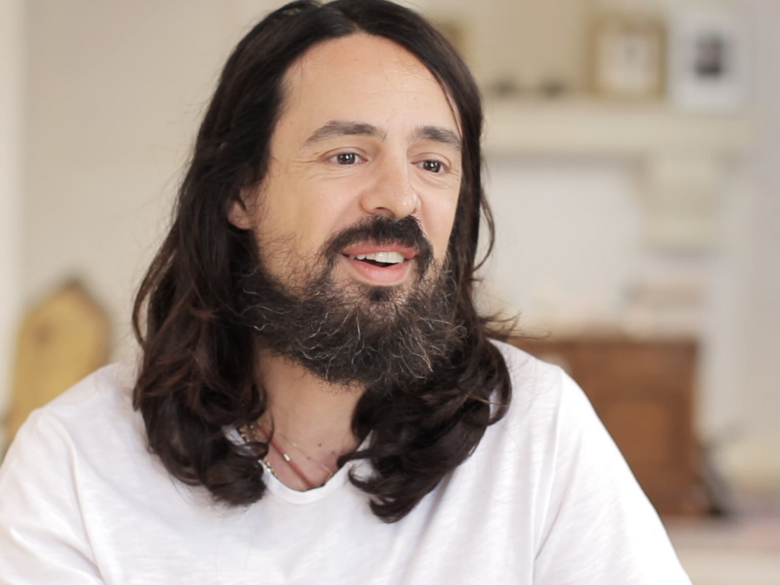HUNGER in conversation with designer Saul Nash
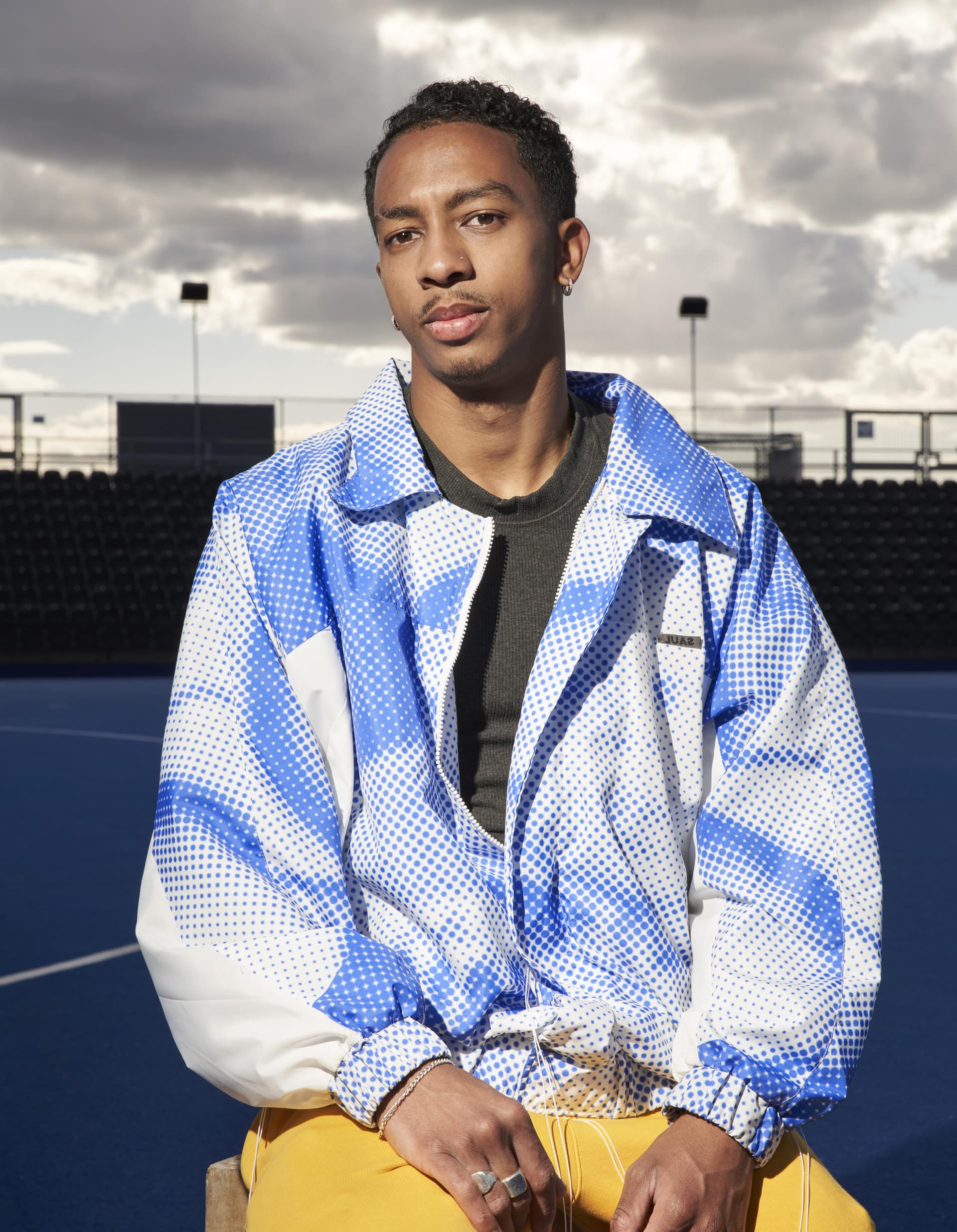
It’s just past 9am on a Thursday morning and Saul Nash joins our video call from his London Studio looking fresh and sounding particularly chirpy for a meeting so early in the work day. The dancer and choreographer turned designer, who launched his eponymous menswear label in 2018, seems well rested now it’s been a few weeks since showing his Dresscodes collection at London Fashion Week as one of the British Fashion Council’s NewGen emerging talents. The latest collection continues Nash’s exploration in technical sportswear designed to liberate those who want a total freedom of movement from their clothing. The catwalk’s nightclub vibes and use of professional dancers in the place of traditional models were a faultless way to show off the fluid and intricate nature of Nash’s craftsmanship.
The Dresscodes catwalk show was filmed by LFW principal partner 1664 Blanc and shown as part of their fashion programme of talks and screenings at The Cinema at Selfridges. Fans of London designer’s work were invited to the screening and then had the chance to converse with Nash during an exclusive Q&A session about his latest offering to the fashion world. But there were a few questions left unanswered, so we jumped on a call to get the details…
HUNGER: Let’s talk about Dresscodes first; the nightclub catwalk, the Garage tunes – where did the inspiration come from?
Saul Nash: From a young age, I’d grown up around Garage because my older brother was an MC and a Garage DJ, and he’d even bring me into MC, so before I was a dancer I was MC-ing with my brother and making beats for him. So, I felt like it was also my era because I was so immersed in it in the house. This one time, my mum asked my brother to take care of me and he sneaked me into a rave at his school and I remember how people made the effort to dress up. Or when we were at home, my brother would put on his Ben Sherman shirt to go out, he had certain things that were very much the clothes of that time. And, I’m now 31, and I’m thinking; ‘what would my tracksuit look like if I had to go out and dress up?’ So, I was really inspired by those dress codes and the fact that people would take sportswear and make an effort to dress it up to go out. So that was really the starting point of Dresscodes.
H: Sportswear has evolved so much since those Garage days and it’s become acceptable to wear it pretty much anywhere, do you think there’s a shelf-life to these more flexible dress codes and also to sportswear’s appeal in general?
SN: People are driven by the times I think. I guess a good example is if you go out now to East London, you go to a bar and people are wearing all kinds of clothes, whereas previously there might have been very strict codes of what you can wear, I think it’s quite democratised now. But I also think times are always evolving, so maybe we might go back to a time where it’s quite strict again. I feel like you always have this idea that everything is progressive, but I think everything often is a reflection of what’s happening more generally. In terms of Sportswear’s appeal, I hope that it can continue to evolve and become part of everybody’s wardrobe, especially as sports referencing and activewear have been embraced by luxury fashion. And, I think it’s really exciting questioning what menswear is or what womenswear is within sportswear too.
H: With that in mind, you’re a menswear designer but your designs are very gender fluid, how do you feel when you see somebody wearing them that isn’t a prescribed ‘Saul Nash customer’ or someone dressing your clothes in a way that you hadn’t imagined?
SN: I think as a designer, you have quite a strong idea around who’s wearing the clothes, but once the clothes go to market it’s interesting because sometimes you discover people you didn’t even expect to wear your clothes, but I quite like it and embrace it because one of my early manifestos was to be able to liberate movement for everybody. So, I do like this idea that people are finding a way to express themselves through my clothes. Once I saw someone wearing my tracksuit bottoms with heels and I thought: ‘Oh, wow! Okay, It looks great what you’re doing,’ but I’d never envisioned it with heels myself.
H: Saying that, you have quite a diverse outlook and that’s definitely apparent on the catwalk in terms of the heritage and variety of models and dancers. How important is that to you?
SN: I think it’s really essential because it reflects how I grew up in London. I knew people from everywhere growing up, and I also think it’s important that there’s representation of all kinds of men on the catwalk. Being a person of colour myself, I have the platform to also open up and enable other people to see themselves, so I think it’s really important.
H: And what about the fashion industry as a whole, could it be doing more for diversity and representation?
SN: I think what’s interesting as an industry is there’s a lot of the visual aspect of representation but I do think we have a lot to work on around the infrastructure of the industry, but I think that takes a long time to get to the point where we see true evolution in it. I think as an industry, I think opening up more positions of power to those people as well would be really important.
H: Back to the collection, it explores the transition from daywear to nightlife, what’s the perfect night out for you?
SN: So, it really does vary. I love going out but if I go out, I’m often going out until six in the morning, so I don’t do it all the time – just once every few months. And what I do really varies, I love going to dancehall nights, I also love going to raves, it really does depend how I’m feeling, and my family really love to party too, so I also love going out with them as well.
H: Are your family your main support network?
SN: I’d definitely say my family, my show team, I work with [stylist and consultant] Elgar Johnson, he’s definitely a real role model and my partner is extremely supportive. I’m also part of a voguing house and I’m quite close with them as well. I really enjoy the times when I’m not working, spending time with the people I care about, and it’s really nice because they’re also very much the ones that are going to tell you the truth.
H: There’s a quote saying that your mum trusted you to buy your own clothes growing up, what does she think these days?
SN: So, in the shows when everyone’s like; ‘Oh my God, that show was amazing,’ my mum plays devil’s advocate and sometimes she’ll be like; ‘you know, your last one was better.’ I quite like it. Really, she is my cheerleader but also she doesn’t hold back her opinion, sometimes she’ll be like; ‘I don’t care if you’re a designer, what are you wearing?’ But we all love and embrace her. I think sometimes it’s actually got us to be quite thick-skinned, because we’re used to picking on each other. We don’t really get offended by it, it makes us laugh.
H: So, tell us about the screening and Q&A with LFW partner Blanc 1664…
SN: I had the wonderful opportunity to partner with 1664, who came and filmed my AW24 Dresscodes show and then hosted an event which gave the public an opportunity to attend and watch the show and then ask me any questions that they might have about my brand or the collection, and it was really nice because they created a moment for me to engage and interact with the public. Often when you interact with people, it’s with industry people, so it was quite wonderful to also talk to you, and hear the perspectives of, I guess people who are not necessarily in the industry but have been following my work.
H: Did any of their questions surprise you?
SN: There was one really interesting question, asking; ‘how do you manage to make the kind of work you make in luxury fashion without dis-enabling certain people from buying the work?’ I found this really interesting because I started to think about status symbols and how when I was young I didn’t really have a lot of money at all but if I wanted something I’d find a way to get it, I might get a cousin to get me the thing or, I just found a way. But also, I guess we’re assuming that only certain people wear streetwear but If you look around on the street, all kinds of people wear it, you might have someone wearing a Gucci tracksuit, it’s more fluid in this day and age because people get the clothes that they want, they find a way to do it.
H: The people attending the Blanc 1664 event paid a small fee to hear you talk, so they really must value what you have to say, how comfortable are with the idea of being a role model?
SN: I tend to have quite a positive outlook on things, and when you have a brand or run a business it gets really busy but I do think it’s important to connect and give back to people. And it’s not just the representation of myself in the fashion industry but it also resonates and carries a lot for the dance industry as well. I don’t really position myself as a role model but I try to share what I can where I can.
H: In terms of the 1664 Blanc partnership, and more generally collaborations you’ve done, how do you know if it’s a good partnership?
SN: I often go on my instinct and question whether it makes sense for myself or my brand. I think it’s also dependent on whether you believe that company has shared values which you. In this case, Blanc provided the platform for designers to engage with the public and also supported the shows which is really essential because shows are very expensive for designers, so to be able to have the opportunity to show at Fashion Week was really amazing.
H: You’re part of the British Fashion Council’s NEWGEN designers and you’re always very complimentary about all the other designers in the initiative, are you more of a community rather than competition sort of person?
SN: I genuinely love every NEWGEN designer, it’s quite wonderful because everyone’s comfortable with one another and I think they’re all extremely talented. When it comes to competition, I used to battle as a dancer, I do vogueing now which is a form of battling, so I’ve always had spaces to practice healthy competition outside of work. With work itself, I think by almost coming to an understanding that not everybody is out to get you, you can really appreciate and uplift others. Being a designer is not always easy, so it’s really wonderful to find a supportive community that can empathise with you, and you can really learn from one another when everything is not so competitive.
H: As well as BFC NEWGEN, you have a list of awards and accolades such as the Queen Elizabeth II Award for British Design, the International Woolmark Prize, being named a LVMH Prize semi-finalist and so much more, how do you deal with the pressure of always producing the goods?
SN: I always want to challenge myself and be inspired by what I’m doing. So it’s not necessarily a pressure because everyone’s entitled to an opinion regardless of whether they really love what you do, or maybe you don’t. But I think the most important thing when you put something out into the world is: can you kind of stand by it? Can you live by it? So that’s really essential for me too. I think as designers, you get more obsessed with things like a technique or ‘have I pushed this far enough?’ Things the outside world might not even see. I don’t really feel much pressure myself because I feel like I’m on a journey, and I’m learning, and I’m trying to kind of evolve things in a way that feels really authentic.
